There can be your advertisement
300x150
What Curtains Designers Choose: Tips + Beautiful Examples
One detail can transform the interior
Well-chosen curtains make an interior feel complete—softening light, adding coziness, and visually adjusting room proportions. However, not all fabrics and styles are relevant today.
Joining with designers, we explore which curtains they choose for different styles, what they consider when selecting length, texture, and color, and why sometimes it's better to avoid traditional draperies.
Add theatricality with heavy velvet
In the work of designer Olga Golubeva, there are several curtain usage options: window curtains as accents, and canopy curtains for atmosphere. The main curtains are made from dense blue textile with brown inserts at the bottom. Thanks to the high arched window and bright wall background, the fabric looks very stylish.
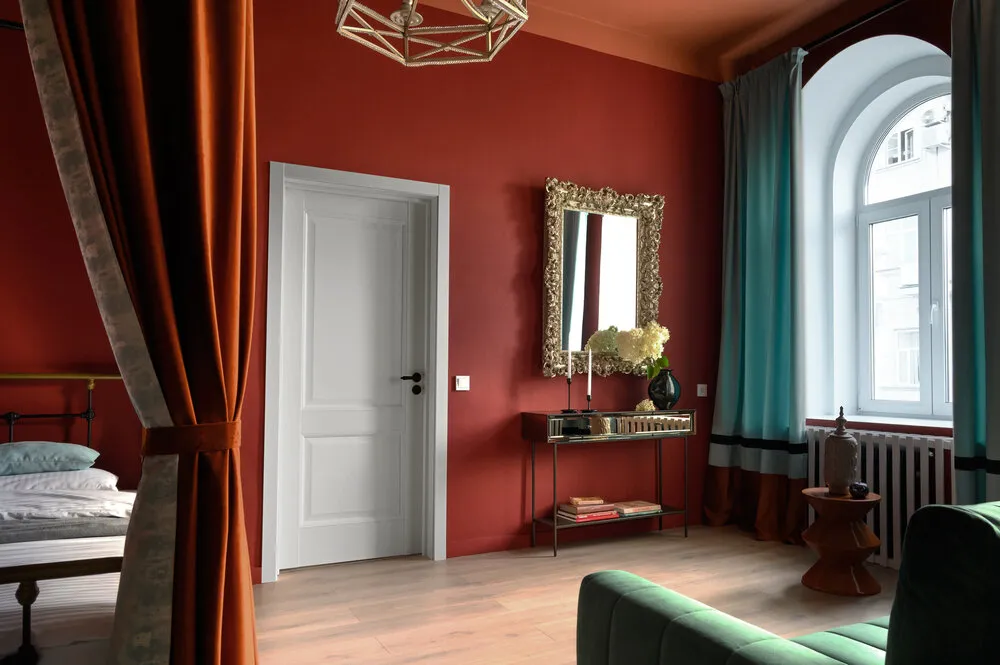 Design: Olga Golubeva
Design: Olga GolubevaThe second type of curtains is on the bed: made from rich brick velvet with a soft texture and form a full canopy, creating a feeling of seclusion.
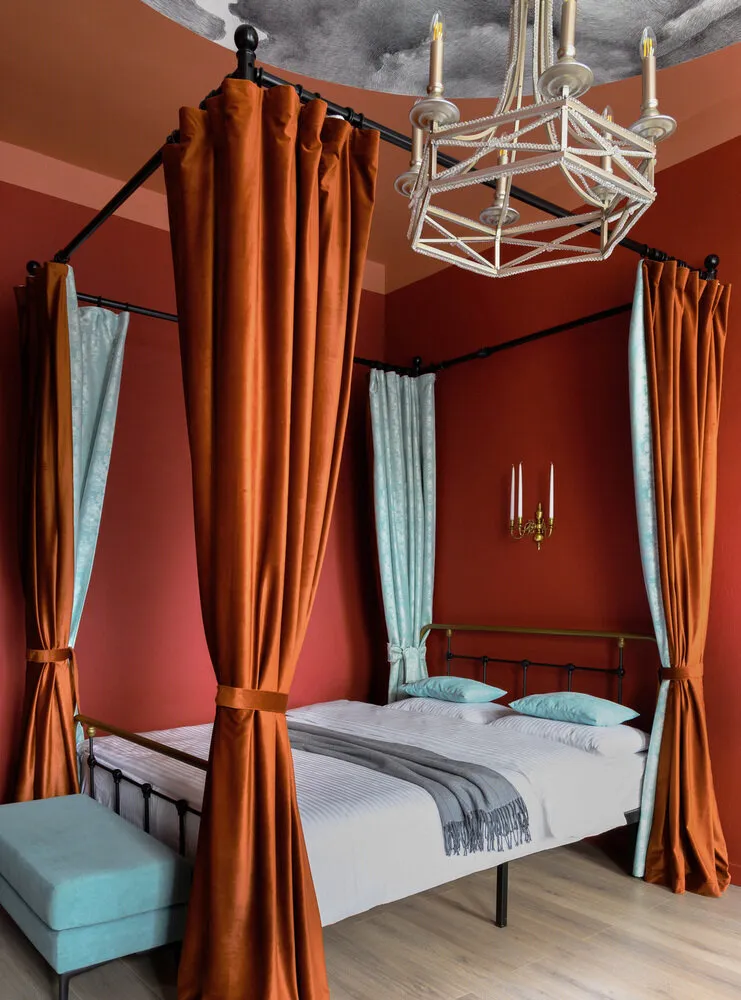 Design: Olga Golubeva
Design: Olga GolubevaTip: if you want warmth and depth, choose dense matte velvet in a rich color. It works especially well in bedrooms and relaxation zones where intimate atmosphere is important. To avoid making the fabric look too heavy, use double decoration like here: velvet is complemented by an inner layer of light blue fabric.
Add romance with multi-layered textiles
In Milada Ayzeman's project, several curtain types also contribute to the atmosphere: in the bathroom, a playful curtain with ruffles, and in the child's room, a light sheer. White cascading curtains in the shower not only highlight the playful nature of the interior but also visually soften the terrazzo tiles and geometric floor.
 Design: Milada Ayzeman
Design: Milada AyzemanA light semi-transparent sheer on the windows in the child's room lets in light while protecting from outside views, creating a relaxed space for studying and rest.
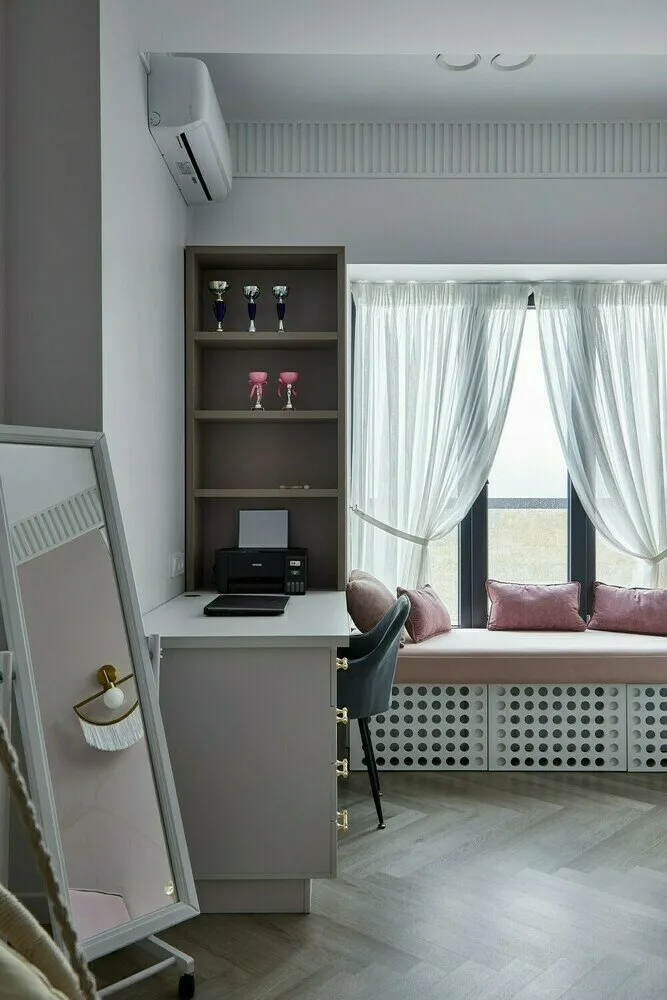 Design: Milada Ayzeman
Design: Milada AyzemanTip: don't be afraid to use unusual textures and shapes even in functional zones—they set the mood. For window treatments in a child's room, focus on fabrics that are easy to wash and don't lose shape. Semi-transparent sheer is a winning choice, especially when paired with pillows and soft seating by the window.
Define a zone with color and accents
In Sara Mikhailova's project, curtains not only serve a practical purpose but also act as a full-fledged way to zone the space. Gray panels with bright maroon trim frame the bedroom niche, highlighting its depth and creating a sense of seclusion.
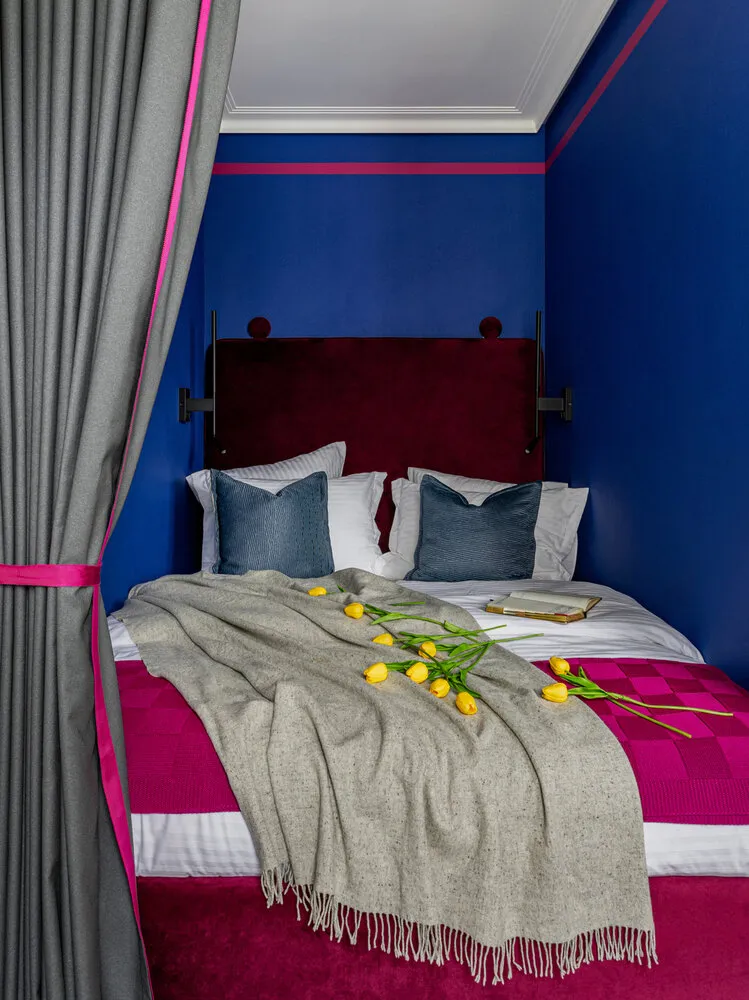 Design: Sara Mikhailova
Design: Sara MikhailovaThey echo the maroon details on walls and textiles, completing the design. The second type of curtains is light semi-transparent curtains on windows that let in soft light and maintain the feeling of airiness in a compact space.
 Design: Sara Mikhailova
Design: Sara MikhailovaTip: if there are no doors in the apartment, textile can zone the bedroom. Use dense monochromatic curtains in combination with contrasting trim or edging—they create clear boundaries and become an accent in the interior.
Add restraint with Roman and classic curtains
Designer Valeria Dolgih used two types of curtains: in the child’s room, Roman style; in the bedroom, classic with a combined edge. The compact Roman curtain with decorative inserts fits perfectly into the window frame and blends naturally with furniture, not weighing down the space.
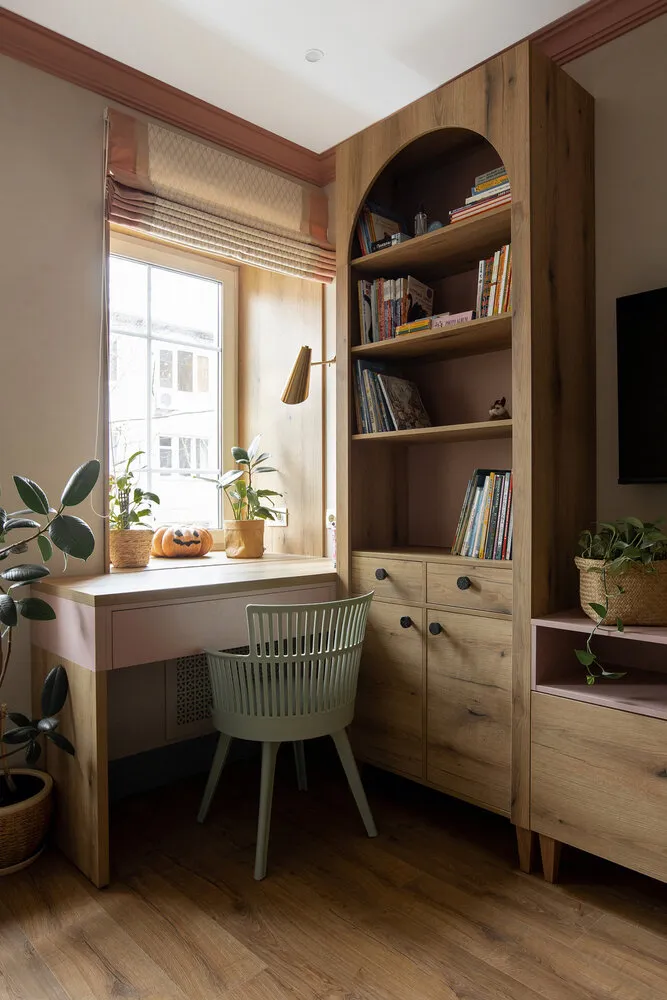 Design: Valeria Dolgih
Design: Valeria DolgihIn the adult bedroom, windows are decorated with straight draperies in subdued tones and enhanced with a dark hem at the bottom—a visual technique that visually “grounds” high ceilings and adds warmth.
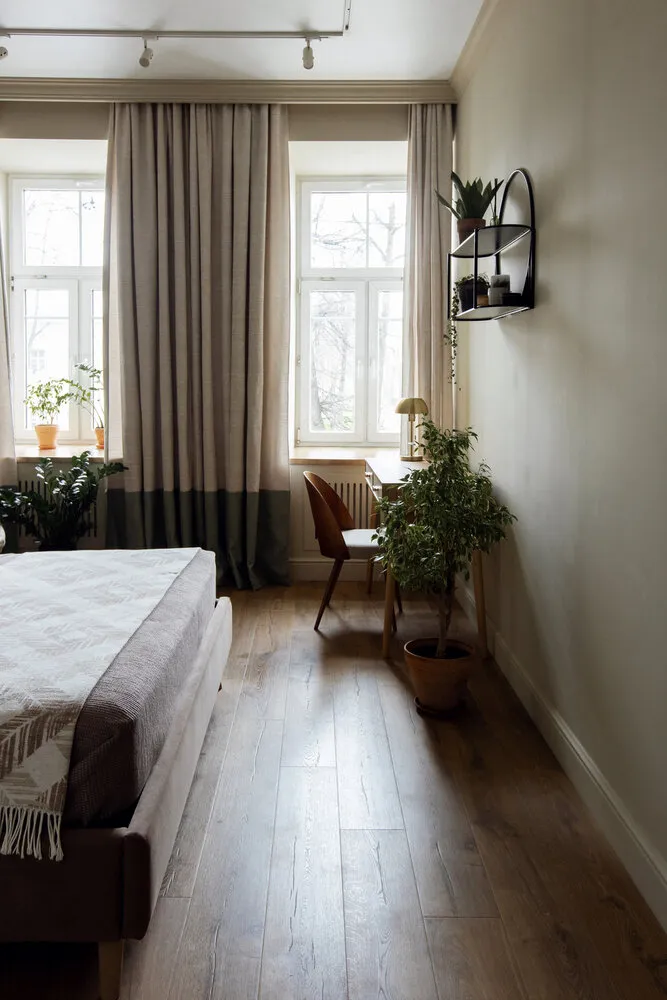 Design: Valeria Dolgih
Design: Valeria DolgihTip: Roman curtains suit small windows and work zones—they save space and look neat. If you want classic style, hang straight draperies in neutral tones and combine them with decorative elements—trim, lifts, or contrasting bottom edges.
Add mood with pattern and silk
For designer Natalia Chopenko, curtains become part of the atmosphere. Window draperies feature a rich botanical pattern that supports the overall vintage vibe and also pairs beautifully with olive-colored walls and textiles.
 Design: Natalia Chopenko
Design: Natalia ChopenkoAnd in the storage niche—smooth silk-like fabric in a light green shade, falling freely from the ceiling. The solution not only hides shelves and hangers but also visually makes the room appear taller.
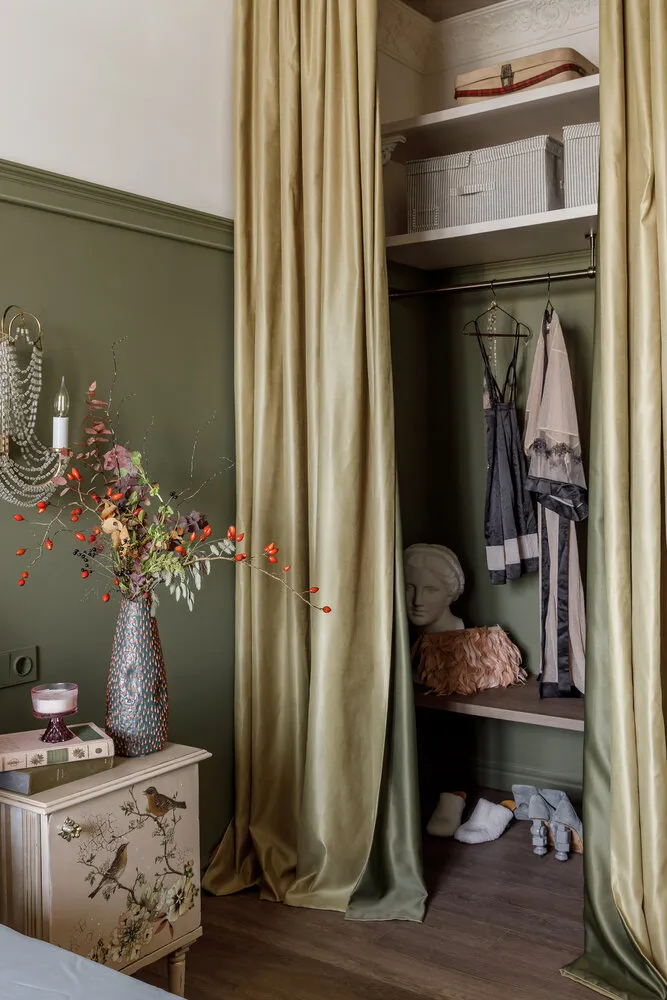 Design: Natalia Chopenko
Design: Natalia ChopenkoTip: combine patterned and solid curtains in one interior—this adds depth and individuality. For storage, you can use dense fabrics with a matte sheen—they look elegant and noble even in simple cuts.
More articles:
 Thoughtful to the Centimeter: 5 Engineering Solutions That Will Save Your Nerves
Thoughtful to the Centimeter: 5 Engineering Solutions That Will Save Your Nerves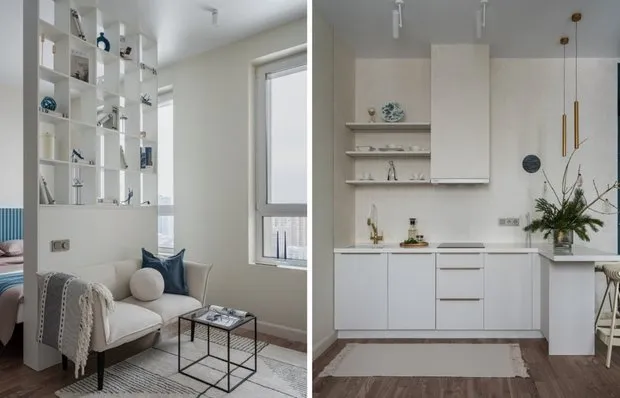 How to Decorate a Compact Apartment: 6 Great Ideas
How to Decorate a Compact Apartment: 6 Great Ideas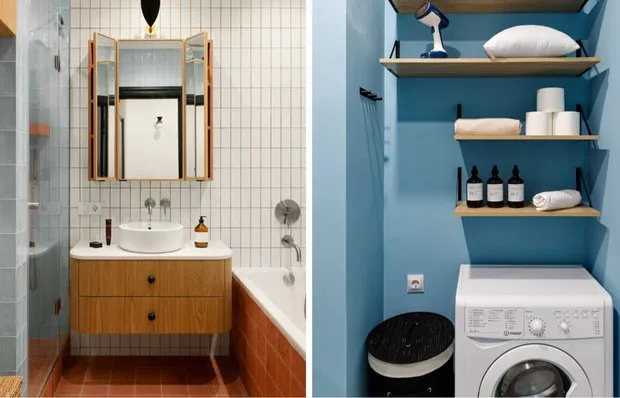 Where to Store Things in a Small Bathroom: 10 Cool Solutions
Where to Store Things in a Small Bathroom: 10 Cool Solutions Budget Renovation Doesn't Mean Poor Quality: Secret Tips for Saving Money Without Sacrificing Standards
Budget Renovation Doesn't Mean Poor Quality: Secret Tips for Saving Money Without Sacrificing Standards Where to Save and When to Pay More in 2025: Analyzing Every Expense Category
Where to Save and When to Pay More in 2025: Analyzing Every Expense Category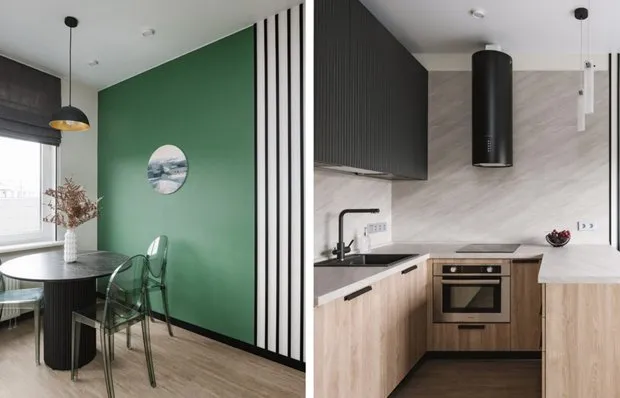 7 budget-friendly stylish ideas for a cozy and functional interior
7 budget-friendly stylish ideas for a cozy and functional interior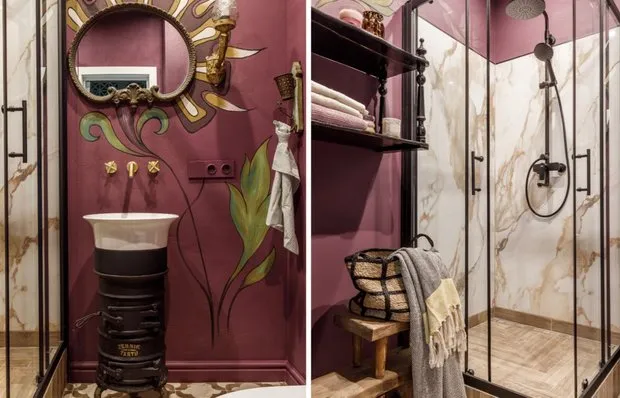 Small Inspiring Bathroom in a 40 m² Studio Apartment
Small Inspiring Bathroom in a 40 m² Studio Apartment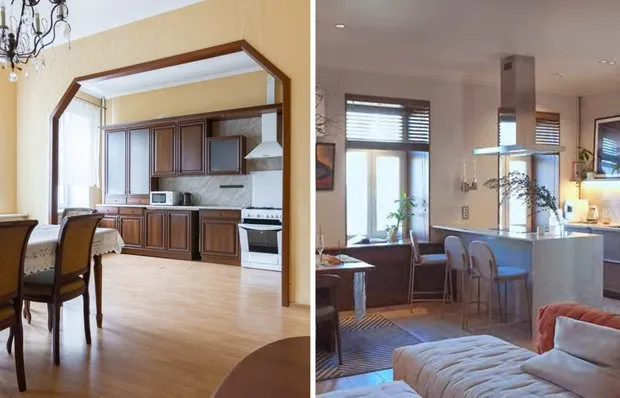 Before and After: Transformation of a 110 m² Apartment Designer in a Heritage House
Before and After: Transformation of a 110 m² Apartment Designer in a Heritage House